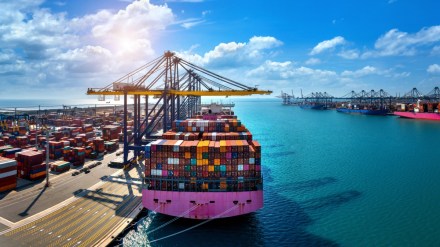At a time when a trade deal between India and the US is being negotiated, the Trump administration has dealt a fresh blow to India’s strategic ambitions by withdrawing its sanctions waiver for the Chabahar port in Iran. This all-weather, deep draft port that sits at the mouth of the Gulf of Oman is India’s gateway to Afghanistan that bypasses Pakistan. Chabahar is also part of the International North South Transport Corridor (INSTC) that enables greater access to Central Asia. India’s involvement through operating Chabahar’s Shahid Beheshti terminal since 2017-18 is integral to its larger drive to open up fresh trade routes as it makes for compelling geoeconomics. This is also evident in its involvement in the India-Middle East-Europe Economic Corridor. India’s ambitions have suffered from the Trump administration’s “maximum pressure” to isolate Iran through revoking the sanctions exception that was provided by Trump 1.0 in 2018 under the Iran Freedom and Counter-Proliferation Act for Afghanistan’s reconstruction.
India’s involvement in Chabahar
India’s involvement in Chabahar has unfortunately been bookended by the US’s sanctions waiver seven years ago and its revocation effective from September 29. The ministry of external affairs has reacted to this US move, stating that it was “examining its implications”. The prospect is for this facility to become a stranded asset as persons operating the Chabahar port and engaging in various related activities will now face sanctions. In December 2018, India Ports Global Limited (IPGL) took over the operations of the Shahid Beheshti terminal. In May 2024, IPGL inked a 10-year contract with Iran Ports and Maritime Organisation for equipping and operating this terminal. India’s grant assistance was enhanced to $120 million and there was also a commitment of a line of credit of $250 million in rupee equivalent. Since 2018, the port has handled over 450 vessels, 134,082 20-foot equivalents of containerised cargo and 8.7 million tons of bulk and general cargo, according to a reply in Parliament by the external affairs minister. Indications are that work has been underway to further expand the port’s capacity as well as connect it to the Iranian rail network as part of the INSTC to access markets in Central Asia.
The US move is a setback for India as Chabahar also functioned as a strategic counter to the China-supported Gwadar port in Pakistan that is only 170 km away. Although India is the dominant power in the Indian Ocean—from Aden to the Straits of Malacca—these waters are also where its rivalry with China is the most intense. “At two ends of this ocean, the churn is at its sharpest today,” argued India’s external affairs minister, S Jaishankar. In West Asia, for instance, geopolitical tensions are escalating which seriously impact global shipping through various chokepoints like the Suez Canal and the Strait of Hormuz.
India seeks unfettered and safe access
With around 95% of its trade and 80% of its oil imports flowing through the Indian Ocean, India seeks unfettered and safe access through these waters as an overriding priority. So, too, does China that has invested billions of dollars in 46 commercial ports across the region, 36 of which are capable of hosting naval assets, according to data from the Council of Foreign Relations.
Of course, India cannot match the dragon in chequebook diplomacy but it must build more ports in the countries that rim the Indian Ocean while seeking alternatives to Chabahar to access Afghanistan and Central Asia.
